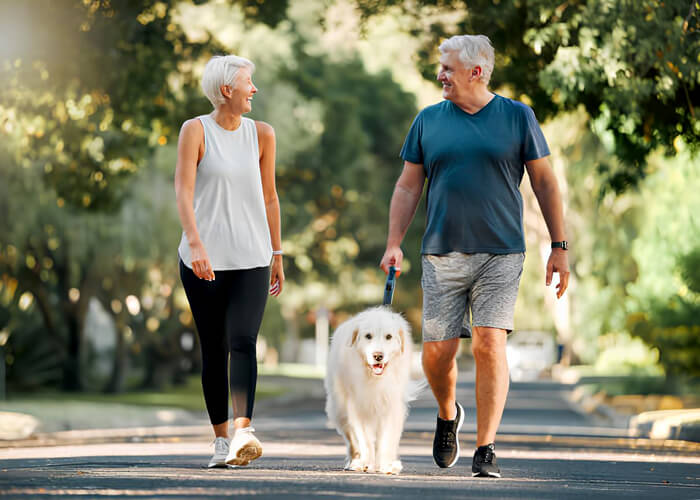
Is the Over-50s Market an Untapped Goldmine for Brands?
Is the over-50s an untapped market for brands? This vast audience represents a demographic with more than half the spending power in the UK population, yet it remains largely overlooked by marketing campaigns. While marketers often target younger age demographics like Millennials and Gen Z, older consumers—especially older women—are an ageing audience with immense potential. Marketing efforts focusing solely on age alone risk missing out on this high-value group.
Why the Over-50s Market Matters
1. Unparalleled Spending Power
Older consumers control more than half of global spending. In the UK, this age group is responsible for nearly 60% of all household expenditures. They’re not just spending on essential items—they’re splurging on new hobbies, luxury goods, health and wellness, and specific activities like travel. With more disposable income than younger generations, older demographics present a far more opportunity for brand owners looking to effectively market to a deeper level of consumers.
2. Loyalty and Brand Advocacy
Unlike young people, older generations tend to demonstrate enduring brand loyalty. When businesses understand consumers in this age range, they can enable brands to build meaningful relationships that last. Older people are not just customers; they become advocates for businesses they trust.
3. Growing Ageing Population
With people living longer and healthier lives, the ageing population continues to grow. By 2030, one in six individuals globally will be over the age of 60. In the UK, this demographic’s growth far outpaces other demographics, making it critical for marketers to take an active approach to reach this group.
Common Misconceptions About Marketing to Older Consumers
Many brands risk alienating older audiences due to persistent ageist stereotypes. The belief that older consumers are a homogeneous group, resistant to technology, or uninterested in trends is outdated.
• Tech-savvy and Connected: Contrary to misconceptions, older people are highly engaged with technology. From using social media platforms to shopping online, they’re a digital-savvy audience. Instagram influencers like Lyn Slater (@iconaccidental) highlight how older generations embrace style and modern trends, making them ideal partners for fashion brands.
• Dynamic Lifestyles: Ageing audience members are taking up new hobbies, exploring wellness trends, and investing in specific activities that improve their quality of life. Marketing campaigns that target purely biological age overlook these broader interests.

How Brands Can Tap Into the Over-50s Market
1. Challenge Ageist Stereotypes
Effective campaigns represent older people as vibrant and diverse. Fashion brands, for instance, can better respond to this audience by designing clothes that combine comfort with high style. Brands like Dove and L'Oréal have excelled by using older models to promote beauty beyond just age.
2. Leverage Digital Platforms
Older demographics are an active audience online. Collaborating with influencers such as Helen Ruth Elam (@baddiewinkle) or Grece Ghanem (@greceghanem) can enable brands to market directly to this group. These influencers demonstrate how wealth, style, and individuality transcend traditional age ranges.
3. Tailor Solutions for Specific Needs
Older equivalent generations have unique preferences:
• Fashion brands should focus on relevant designs that meet comfort and practicality requirements.
• Tech companies must design user-friendly products with clear instructions.
• Travel businesses can attract older consumers by offering accessible accommodations and curated experiences.
4. Highlight Values and Experiences
This group values sustainability, ethical practices, and authenticity. By understanding attitudes and reflecting these values in advertising, marketers can resonate with older consumers. Experiential marketing, such as hosting workshops or events, helps brands connect on a deeper level.
5. Use Data for Personalization
To effectively market to older people, businesses must leverage data to understand this demographic better. Personalizing campaigns based on spending habits, preferences, and interests can yield better ROI.

Brands Already Winning in the Over-50s Market
Some brands have recognized the potential of this ageing audience:
• Nike: Their campaigns celebrate older athletes, proving physical activity transcends age.
• Peloton: By emphasizing low-impact workouts and community, they’ve captured the interest of older customers.
• Apple: Accessibility features and user-friendly designs make Apple’s products popular among older demographics.
The Risks of Ignoring the Over-50s
Ignoring older consumers is a risk brands can no longer afford. With more money to spend and an increasing presence across demographics, failing to address this audience can result in lost revenue and perpetuate ageist narratives.
Conclusion
It’s about time marketers took a more active approach to engage this audience. The over-50s market offers vast opportunities for brands to grow their customer base and improve their campaigns. By targeting specific activities, understanding attitudes, and leveraging data, brands can respond to the ageing population with relevant solutions. The question isn’t whether to target the over-50s; it’s how soon brands can start tapping into this lucrative market. As someone who is an influencer in this space I would be delighted to talk more on the subject and share my insights
About the Author:
Gordon Glenister is an international expert on influencer marketing and membership. As 11 years at the helm of leading trade association, he has been instrumental in the setting up of the influencer channel of the Branded Content Marketing Association and also the Meetings and Events Support Association.


